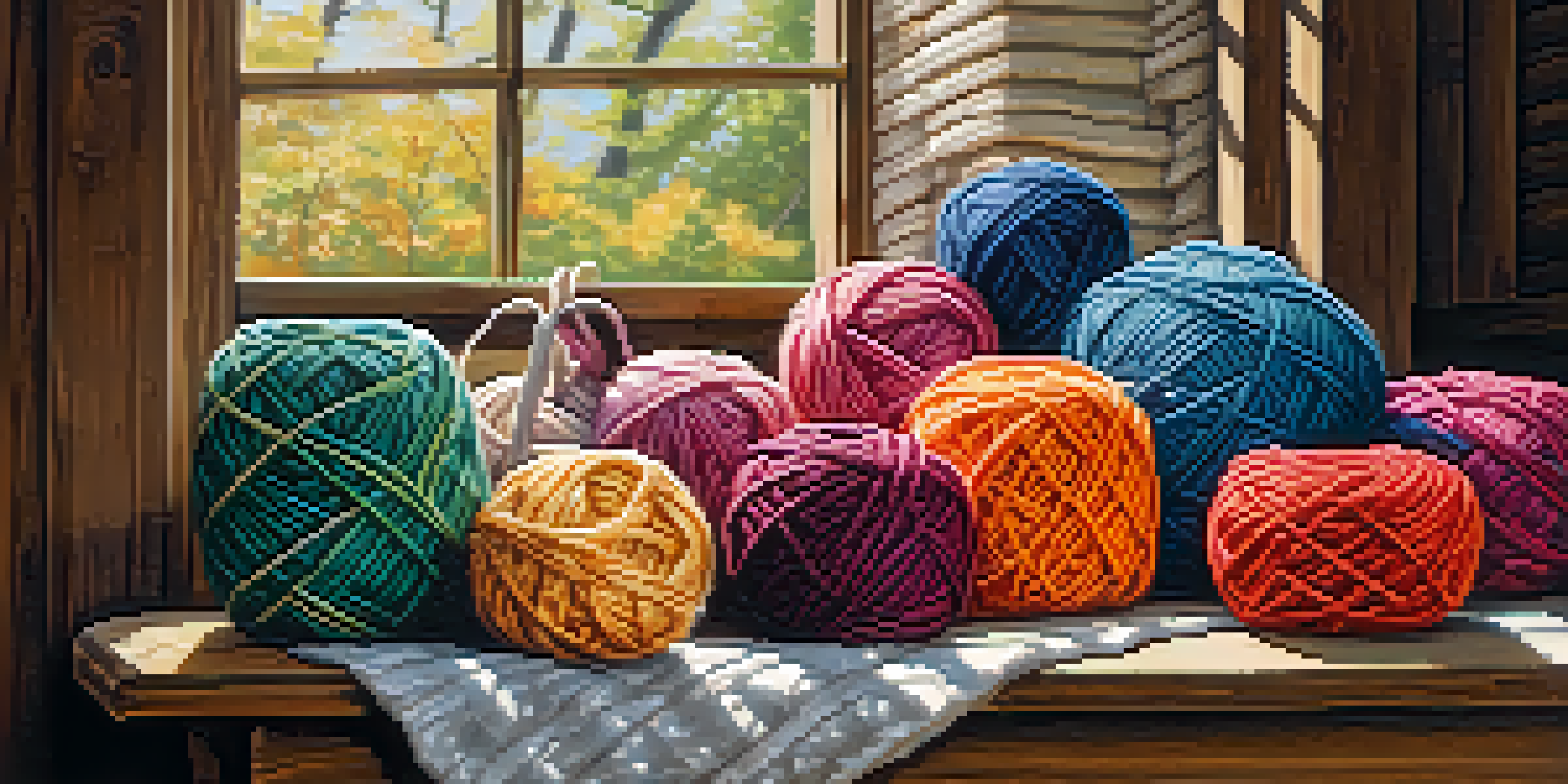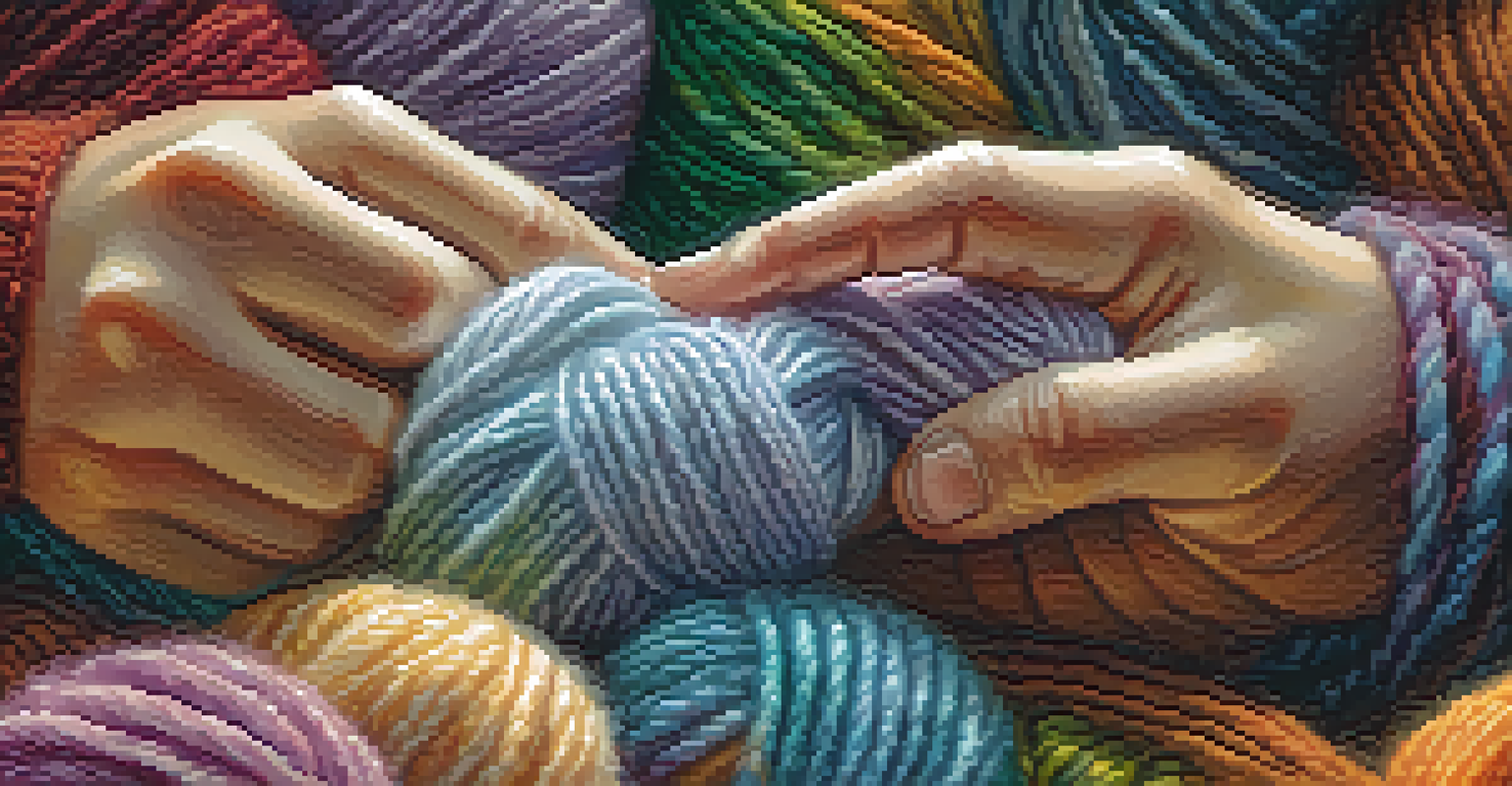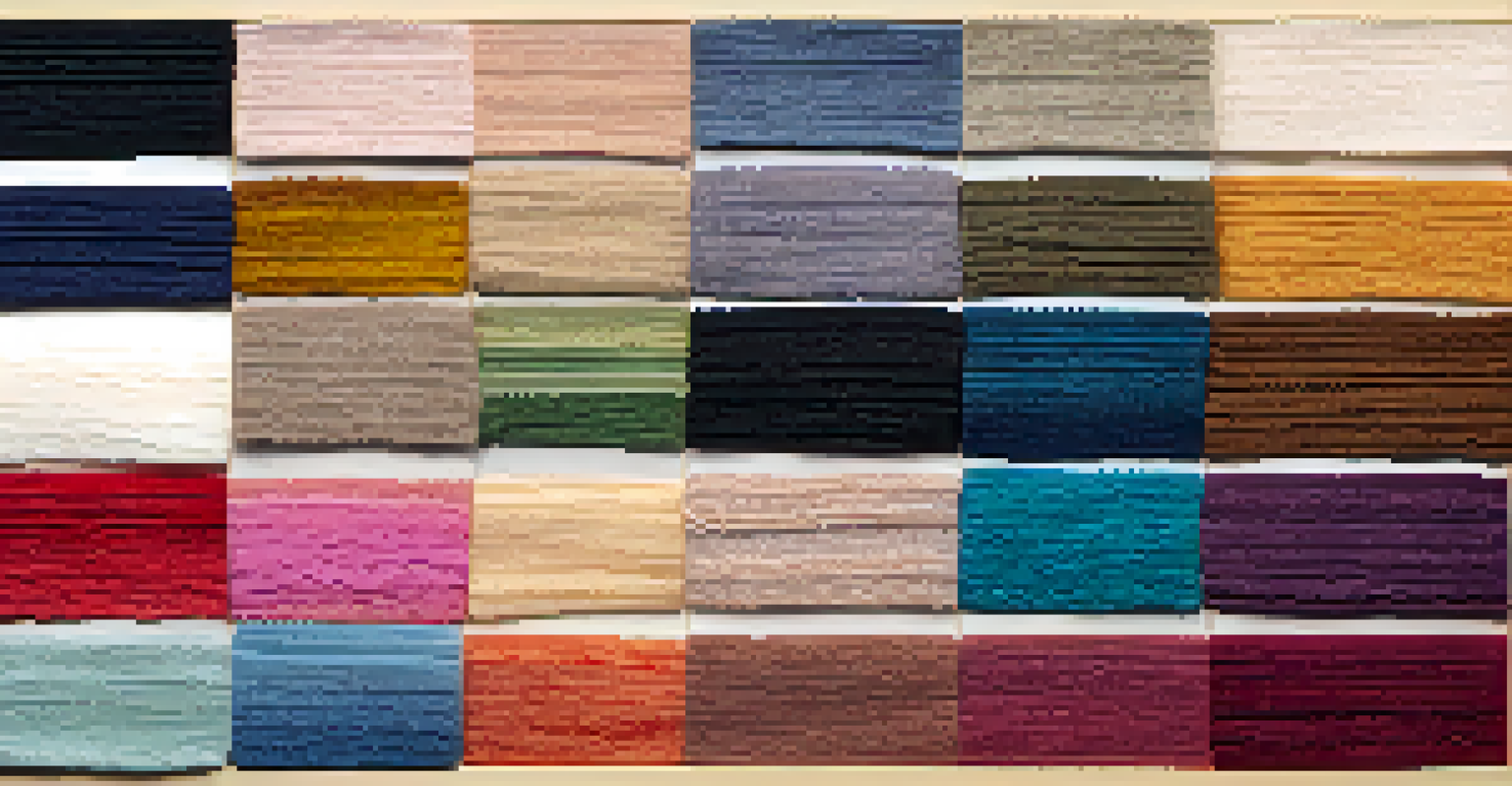Innovative Techniques: Blending Yarn Types in Your Projects

Understanding Yarn Types and Their Unique Qualities
Yarn comes in various types, each with its own texture, thickness, and material. Understanding these differences is key to creating beautiful projects. For instance, wool offers warmth and elasticity, while cotton provides breathability and a smooth finish.
Creativity is allowing yourself to make mistakes. Art is knowing which ones to keep.
When blending yarns, consider how they complement each other. Mixing a soft alpaca with a sturdy acrylic can yield a uniquely textured fabric that boasts both warmth and durability. This combination can be particularly useful in creating garments that need to withstand daily wear.
It's also important to think about the final look and feel of your project. A mix of shiny silk and fuzzy mohair can create a stunning visual contrast, enhancing your design's aesthetic appeal. So, take the time to explore the properties of different yarns before diving into your next project.
Choosing the Right Yarn for Blending Techniques
Selecting the right yarn for blending is crucial to achieving your desired outcome. Look for yarns that have similar weights and fiber contents to ensure they work well together. For example, pairing two worsted weight yarns can help maintain consistency in your stitches.

It's also beneficial to experiment with different fiber blends. A combination of bamboo and wool can result in a lightweight yet warm fabric, perfect for transitional weather garments. Understanding the properties of each fiber allows you to make informed choices.
Understanding Yarn Varieties
Different types of yarn have unique qualities that influence the texture, warmth, and overall aesthetic of your projects.
Lastly, don’t shy away from unconventional blends. Mixing natural fibers like hemp with synthetic options can yield innovative results, giving your project a unique character. The key is to keep an open mind and let your creativity guide you.
Techniques for Blending Yarn Types Seamlessly
One effective technique for blending yarns is to alternate between them in your project. This approach creates a striped effect that can add depth and interest to your work. For example, knitting a striped scarf with varying yarn types can produce a dynamic, eye-catching accessory.
The only limit to our realization of tomorrow will be our doubts of today.
Another method is to hold two strands together while working. This technique not only creates a thicker fabric but also allows the characteristics of each yarn to shine. Imagine combining a soft, fuzzy yarn with a shiny one to create a fabric that’s both luxurious and warm.
Lastly, consider using a gradient approach, where you gradually shift from one yarn type to another. This can create a beautiful ombre effect that draws the eye and adds sophistication to your project. It’s a fantastic way to experiment with color and texture transitions.
Incorporating Color Theory in Blended Yarn Projects
Color theory plays a vital role in blending yarns effectively. Understanding the color wheel can guide you in choosing complementary colors that enhance your project. For instance, pairing a vibrant teal with a soft cream can create a stunning contrast that is both eye-catching and harmonious.
Consider the mood you want your project to evoke. Warm colors like reds and oranges can create a cozy feel, while cool colors like blues and greens can convey serenity. Blending yarns in these colors can help achieve the desired emotional impact.
Effective Blending Techniques
Techniques like alternating yarns, holding strands together, and using gradients can enhance the visual appeal and texture of your creations.
It’s also helpful to test your color combinations before committing to a large project. Creating small swatches can give you a better idea of how the colors interact when blended. This practice can save you time and ensure your final piece looks just as you envisioned.
Common Mistakes to Avoid When Blending Yarns
One common mistake is not considering the weight of the yarns being blended. Mixing a bulky yarn with a lace weight can lead to uneven tension and an unbalanced fabric. Always aim for yarns that are similar in weight to ensure a cohesive look.
Another pitfall is neglecting to swatch before starting your project. Swatching allows you to see how the yarns interact and helps you adjust your knitting or crocheting tension. Skipping this step can result in unexpected surprises further down the line.
Finally, don't forget about care instructions. Blending yarns with varying washing and drying requirements can complicate maintenance. Always check the care labels and blend accordingly to ensure your finished project remains beautiful for years to come.
Inspiration from Blended Yarn Projects
Looking for inspiration? Many crafters have created stunning pieces by blending yarn types. For instance, a cozy throw made from a combination of chunky wool and colorful cotton can be a show-stopper in any living room. These projects not only showcase creativity but also highlight the benefits of blending.
You can also find numerous patterns online that specifically call for blended yarns. Websites and social media platforms are filled with talented makers sharing their innovative designs. This can be a great way to see how others are approaching their projects and inspire your own creativity.
Avoid Common Blending Mistakes
Being mindful of yarn weight, swatching, and care instructions can help you achieve balanced and long-lasting results in your projects.
Don’t hesitate to share your own blended yarn creations as well! Joining online forums or local crafting groups can provide a supportive community where you can exchange ideas and tips. You never know, your project might inspire someone else!
Conclusion: Embrace Your Creativity with Blended Yarns
Blending yarn types opens up a world of creative possibilities for your projects. By understanding different yarn qualities and using innovative techniques, you can create unique and beautiful pieces that reflect your personal style. The journey of blending yarns is as rewarding as the final product.
Remember, crafting is about experimentation and enjoying the process. Don’t be afraid to try new combinations or techniques, as this is how you’ll develop your skills further. Each project is an opportunity to learn and grow as a fiber artist.

So, gather your yarns, let your imagination run wild, and start blending! With a little practice and creativity, you'll be amazed at what you can create. Happy crafting!